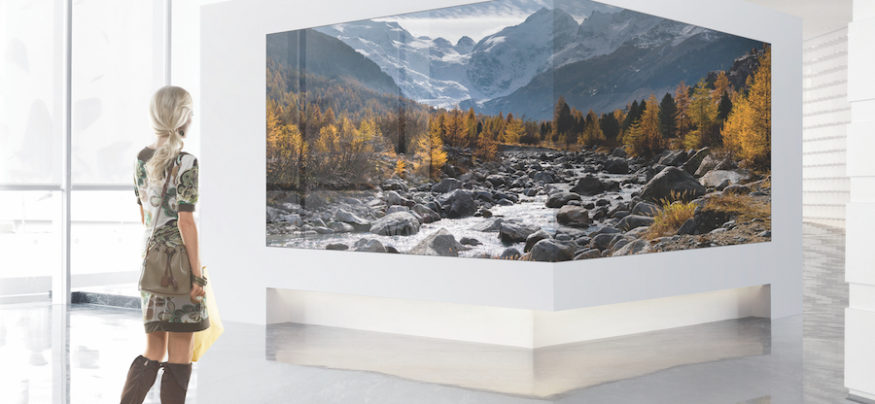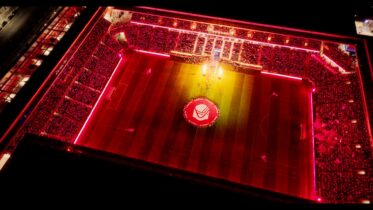All digital signage mounts are not created equal.
As with most technologies, there are commercial-grade solutions and then there are budget solutions that may look much the same as the more expensive business-rated gear. Going with a budget option may save money up front, but cost stakeholders more money in the long run.
Here’s how to evaluate all the digital signage mounting options you’ll encounter, and how to pick the best type for your signage.
Commercial Versus Consumer
The quality of the engineering design can have a big impact on everything from durability to ease of adjustments and serviceability.
A cheap mount made from thinner metal may not have the strength to hold up (literally) long-term — and particularly to handle abuse and misuse. Perhaps there’s little reason to worry about someone pulling hard on a screen wall-mounted in a private home, but in a public environment, anything is possible.
Lower cost mounting systems also tend to have fewer features and capabilities for the sorts of minute adjustments that can be critical for the fit and finish of the installation job. On the other hand, quality commercial-grade products tend to be designed to simplify installation and minimize the need for special tools. The added upfront capital cost allows for faster, smoother installation, whereas lower cost hardware takes longer to install, and therefore escalates labor and other hidden costs.
Simple things can turn into big problems for consumer solutions that are designed for predictable environments like a living room wall. For digital menu boards or other commercial signage, the area that needs to be used to mount the screens may not properly fit consumer mounts due to limited space or odd angles.
How to Plan and Deploy LED Digital Signage
Discover the unique advantages of direct-view LED technology over traditional LCD displays. Download Now
Another concern installers need to consider is cable management — from how the cables are run to connectors, to what happens when a mount is pulled out or swung open for servicing. Is the cabling set up to “travel” with the display, or do they pull out or get damaged because servicing wasn’t factored into the mounting?
For sophisticated installations like video walls, with multiple displays tiled together to create a single visual canvas, the quality of the engineering and the ease of adjustment can mean the difference between a smooth, even surface and one that’s visually compromised by misaligned joints and obvious gaps.
Lesser solutions often don’t allow for fast servicing. Well-designed solutions make it possible to easily pull out screens on mounts with scissor hinges, or swing open video wall panels. Remedying issues like loose connectors can be done in minutes, or even seconds. With budget systems, reseating a cable connector could take hours of dismantling work, effectively decommissioning a video wall and taking it apart so that a technician can finally get the rear access needed to even reach a connector.
The Main Mounting Options
Here are the most common mounting types for digital signage, and factors to consider:
Flat wall: The simplest mount hangs a display on a wall like a picture, but within that design, there will often be a need for metalwork and even locking systems that prevent someone from tampering with or taking the media player that may be tucked behind. That problem goes away if the media player is embedded, as in Samsung’s Smart Signage displays. Another consideration with flat mounts is the Americans with Disabilities Act, which in some cases may require the display to protrude no more than 4 inches from the wall.
Tilt wall: These mounts are versions of flat, fixed wall mounts, but are intended for scenarios where the screens are located above the normal line of sight for viewers. A common case is menu boards at fast food order counters. What’s important here are flexible adjustments that allow users to fine-tune the angle, instead of using a preset position that may not offer the best viewing.
Full-motion wall: These are systems that pull out based on releases or swing open. In either case, buyers should look for products that are UL-tested to handle the weight when away from the wall and have adjustments for glare and optimal viewing angles. Good commercial products also have things like quick releases, as opposed to more cumbersome systems that may require tools.
Ceiling mount: These systems allow screens to be hung from metal harnesses attached to poles that are then attached to ceilings — usually the support beams. End users should be looking for systems that offer variable heights, options for different harnesses and angles, and UL-rated durability. A display falling from a ceiling is an operator’s nightmare and an injury lawyer’s dream.
Video wall mounts: These are the most technically elaborate mounting systems, because they require precision adjustments that align several displays — maybe even dozens. To look great, the bezels (the seams between the screens) need to be minimized and the junctions where screen corners meet need to be perfectly aligned and flush. As mentioned earlier, servicing access is a huge concern. Often, larger video walls require custom mounting designs, and several manufacturers have custom divisions. There are also custom mounting system specialists.
Outdoor: Outdoor displays introduce many complications, and some of the top mounting manufacturers have outdoor systems that protect against moisture penetrating the enclosures and damaging electronics. Ruggedization also has to be factored in to protect against tampering and vandalism, as do pedestals for mounting to plaza floors or sidewalks. Some companies specialize in full outdoor enclosure systems; Samsung has outdoor-rated, high-brightness, plug-and-play display solutions, allowing enclosure manufacturers to interface with purpose-built outdoor signage.
Making Decisions
End users and solutions providers factoring mounting systems into their projects should find installation partner companies familiar with the job, challenges and mounting solutions options. There are many, and it’s valuable to work with people who know what they’re looking at.
Mounting brackets may look very much the same across the pricing spectrum, but the differences are substantial, and instrumental in ensuring a signage project will be successful.
Plan your digital signage deployment by exploring Samsung’s full line of display solutions.









